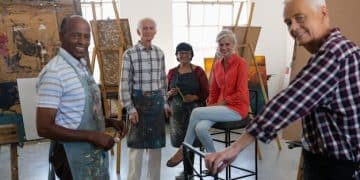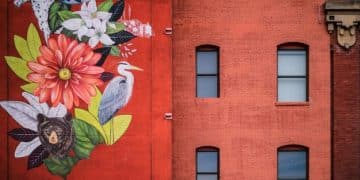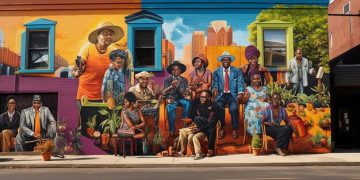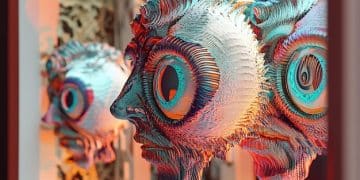The Power of Storytelling: Local Artists Preserving Community History
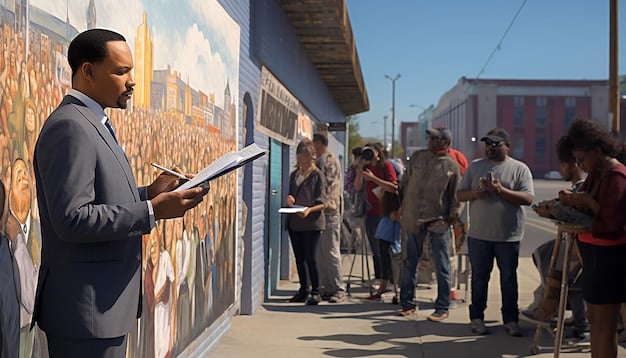
The Power of Storytelling: How Local Artists Can Preserve Community History highlights the crucial role of local artists in capturing and sharing the narratives that define a community’s identity, fostering connection and safeguarding its unique heritage for future generations.
In every town and city, stories whisper from the walls of old buildings, echo in the laughter of children playing in the streets, and linger in the memories of its residents. The Power of Storytelling: How Local Artists Can Preserve Community History lies in their ability to capture these ephemeral moments, weaving them into lasting narratives that connect us to the past and shape our understanding of the present.
The Art of Preserving History Through Narrative
Storytelling has always been a fundamental part of human culture, serving as a means to pass down knowledge, traditions, and values from one generation to the next. Local artists play a critical role in this process, utilizing their creative skills to translate historical events and personal experiences into compelling narratives that resonate with the community.
The Role of Artists as Historians
Artists act as historians by researching, interpreting, and visually representing the stories of their community. They delve into archives, conduct interviews with residents, and explore the physical landscape to uncover the narratives that shape the town’s identity.
Capturing the Essence of Community
By focusing on personal stories and local events, artists can capture the unique essence of a community, preserving its character and spirit for future generations. This can involve creating murals, sculptures, performances, or digital media that reflect the town’s history and culture.
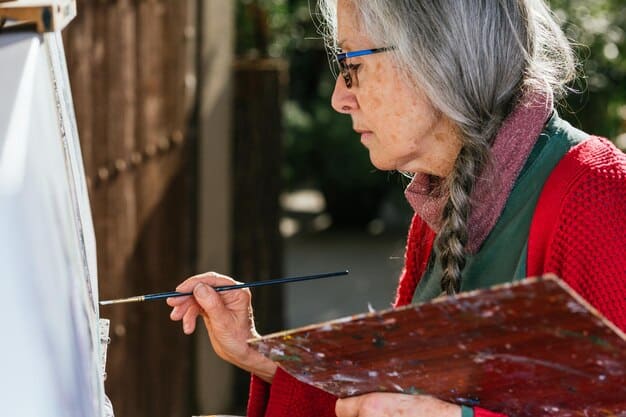
- Visual Representation: Artists create tangible and lasting representations of historical stories, making them accessible to a wider audience.
- Community Engagement: Storytelling through art engages community members, fostering a sense of belonging and shared identity.
- Preservation of Heritage: Artistic narratives safeguard cultural heritage, ensuring that traditions and values are passed down through generations.
- Education and Awareness: Art serves as a powerful tool for education, raising awareness about local history and its significance.
Ultimately, the art of preserving history through narrative is about creating a sense of connection and understanding within a community, ensuring that its stories are remembered and valued for years to come. These visual and auditory representations help to create a more nuanced and intimate understanding of the past than can be achieved through textbooks or lectures.
Diverse Art Forms: A Medium for Storytelling
Local artists employ a diverse range of art forms to tell stories, each offering a unique approach to capturing and sharing community history. From painting and sculpture to theater and digital media, the possibilities are endless.
Each medium offers unique advantages. For example, murals offer large-scale visual narratives, while theater provides a dynamic and engaging experience. Ultimately, the choice of art form depends on the story being told and the message the artist wishes to convey.
Murals and Public Art
Murals transform public spaces into canvases, visually narrating historical events, cultural traditions, and the lives of community members. They serve as landmarks, sparking conversations and fostering a sense of pride in the town’s heritage.
Theater and Performance Art
Live performances bring stories to life, engaging audiences through dramatic reenactments, musical performances, and spoken word. Theater can create immersive experiences that transport viewers back in time, allowing them to connect with the past on an emotional level.
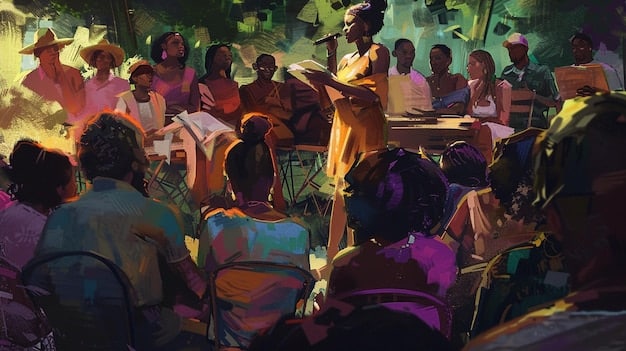
The key is to choose an art form that resonates with the story and the audience, ensuring that the message is conveyed effectively and memorably. Art can be a powerful tool for connecting people with their past.
Engaging the Community: Collaborative Art Projects
Collaborative art projects offer a powerful way to engage the community in the storytelling process. By inviting residents to participate in the creation of art, artists can foster a sense of ownership and shared responsibility for preserving local history.
Collaborative projects can take many forms, from community mural painting to oral history initiatives. No matter what form they take, these projects can be transformative, not only for the community but for the artists involved.
Community Mural Painting
Inviting community members to contribute to a mural allows them to share their stories and perspectives, creating a collective narrative that reflects the town’s diverse experiences. This fosters a sense of unity and pride in the community’s shared heritage.
Oral History Projects
Recording interviews with local residents, particularly elders, preserves their personal stories and memories, providing valuable insights into the town’s history and culture. These oral histories can be transcribed, archived, and used as inspiration for future art projects.
- Increased Engagement: Collaborative projects encourage active participation from community members.
- Diverse Perspectives: Gathering input from various residents ensures a more comprehensive and inclusive representation of local history.
- Sense of Ownership: Participants develop a sense of ownership over the artwork, fostering a stronger connection to their community and its heritage.
- Skill Sharing: Collaborative projects provide opportunities for community members to learn new skills and share their expertise.
Ultimately, these projects empower residents to become active participants in shaping their community’s narrative, ensuring that its stories are told authentically and shared with future generations. They can also increase social cohesion and build stronger relationships between community members.
Funding and Support: Resources for Local Artists
Securing funding and support is crucial for local artists to bring their storytelling projects to life. There are various resources available, from grants and sponsorships to community fundraising initiatives.
Artists may also consider seeking out mentorship opportunities or joining professional organizations. These networks can provide valuable support and guidance, helping artists to navigate the challenges of their profession.
Grants and Sponsorships
Local, state, and national organizations offer grants and sponsorships to support arts and culture initiatives. Artists can research these opportunities and submit proposals that highlight the community impact and historical significance of their projects.
Community Fundraising
Engaging the community in fundraising efforts can generate financial support and build awareness for storytelling projects. Artists can organize events, launch crowdfunding campaigns, or solicit donations from local businesses and residents.
By tapping into these resources, artists can secure the financial and logistical support they need to realize their creative visions and preserve community history through storytelling. It is also a way to foster public engagement in the arts.
Challenges and Solutions: Overcoming Obstacles
Despite the numerous benefits of storytelling through art, local artists may encounter various challenges, such as limited funding, lack of community support, or conflicting historical narratives. Overcoming these obstacles requires creativity, resilience, and a commitment to collaboration.
Limited Funding
Securing adequate funding for art projects can be a significant hurdle. Artists can explore alternative funding models, such as crowdfunding, partnerships with local businesses, or in-kind donations of materials and services. They should also seek out grants and sponsorships from arts-related organizations.
Lack of Community Support
Building community support requires effective communication and engagement. Artists can organize public forums, workshops, or exhibitions to showcase their work and solicit feedback from residents. They can also collaborate with local organizations and community leaders to build partnerships and foster a sense of shared ownership.
Conflicting Historical Narratives
Addressing conflicting historical narratives requires sensitivity and respect for diverse perspectives. Artists can facilitate dialogue and create inclusive spaces for community members to share their stories and interpretations of the past. They can also work with historians and cultural experts to ensure accuracy and balance in their representations.
By addressing these challenges head-on, local artists can create meaningful and impactful storytelling projects that contribute to the preservation of community history and the strengthening of social bonds. By being flexible and open to new possibilities, they can find innovative solutions to the obstacles they face.
The Future of Storytelling: Technology and Innovation
As technology continues to evolve, new opportunities emerge for local artists to enhance their storytelling capabilities and reach wider audiences. Digital media, virtual reality, and interactive installations offer exciting possibilities for engaging the community and preserving history in innovative ways.
Digital Storytelling
Creating digital narratives through video, animation, and interactive websites allows artists to reach a broader audience and share stories in engaging and accessible formats. Digital platforms can also be used to archive oral histories, document community events, and create virtual tours of historical sites.
Virtual Reality and Immersive Experiences
Virtual reality (VR) technology offers immersive experiences that transport viewers to different time periods or locations, allowing them to interact with historical events and cultural traditions in a dynamic and engaging way. VR can be used to recreate historical settings, simulate community events, or showcase the lives of local residents.
Interactive Installations
Interactive installations invite community members to participate in the storytelling process, allowing them to contribute their own stories, memories, and perspectives. These installations can take various forms, such as interactive displays, digital kiosks, or augmented reality experiences.
By embracing technology and innovation, local artists can ensure that community history remains relevant, engaging, and accessible to future generations. The combination of traditional art forms with modern technologies can create powerful and transformative experiences for both artists and audiences.
| Key Point | Brief Description |
|---|---|
| 🎨 Artists as Historians | Local artists play a crucial role in researching, interpreting, and visually representing community stories. |
| 🤝 Collaborative Projects | Engaging residents in art creation fosters ownership of local heritage. |
| 💰 Funding Resources | Grants, sponsorships, and community fundraising support artists. |
| 📱 Tech & Innovation | Digital media and VR offer new avenues for engaging wider audiences and immersive experiences. |
FAQ
▼
Storytelling captures and shares the narratives that define a community’s identity, fostering connection and safeguarding its unique heritage for future generations. It ensures that traditions, values, and historical events are remembered and passed down.
▼
Local artists use various art forms to translate historical events and experiences into compelling narratives that resonate with the community. They create visual and auditory representations that capture the essence of the community’s history.
▼
Challenges include limited funding, lack of community support, and conflicting historical narratives. Artists need to be creative, resilient, and committed to collaboration to overcome these obstacles and realize their projects.
▼
Communities can support local artists by providing funding through grants and sponsorships, engaging in fundraising efforts, and attending public forums and exhibitions. This creates a supportive environment that allows artists to thrive.
▼
Technology enhances storytelling through digital media, virtual reality, and interactive installations. These tools offer new ways to engage audiences, preserve history innovatively, and reach wider audiences with compelling narratives.
Conclusion
Local artists play a vital role in preserving community history through the power of storytelling. By utilizing their creative skills and engaging with the community, they can ensure that the unique narratives and cultural heritage of their towns are remembered and celebrated for generations to come. Their dedication enriches our understanding of the past and strengthens the bonds that connect us.
